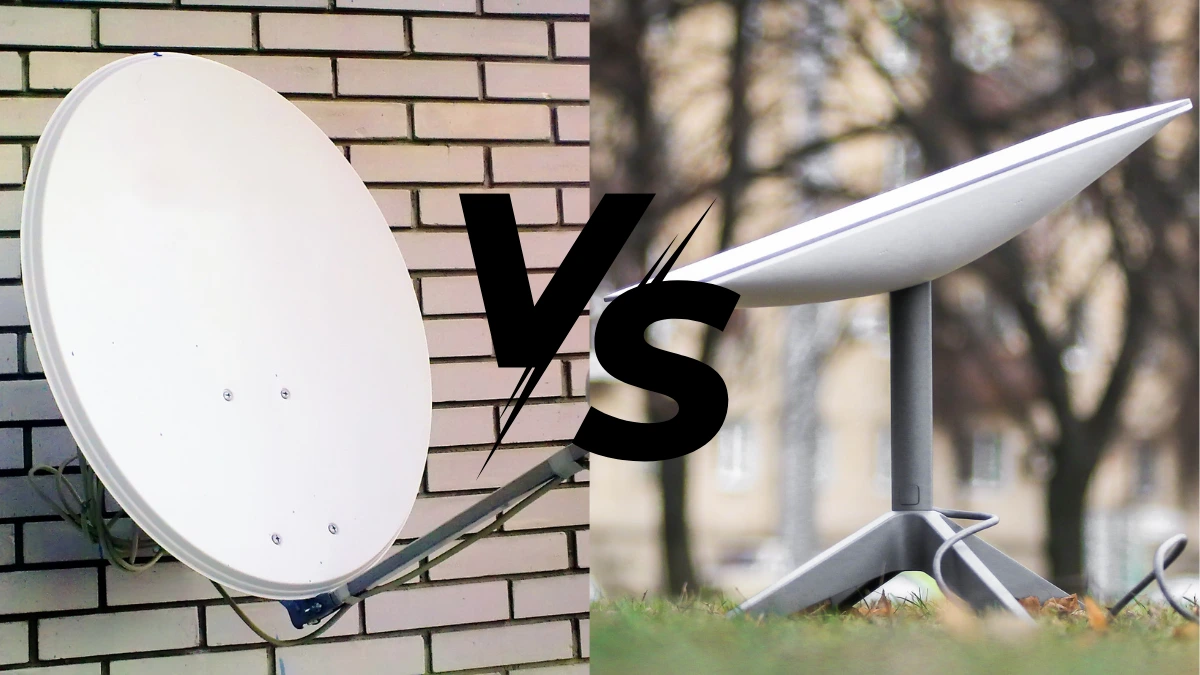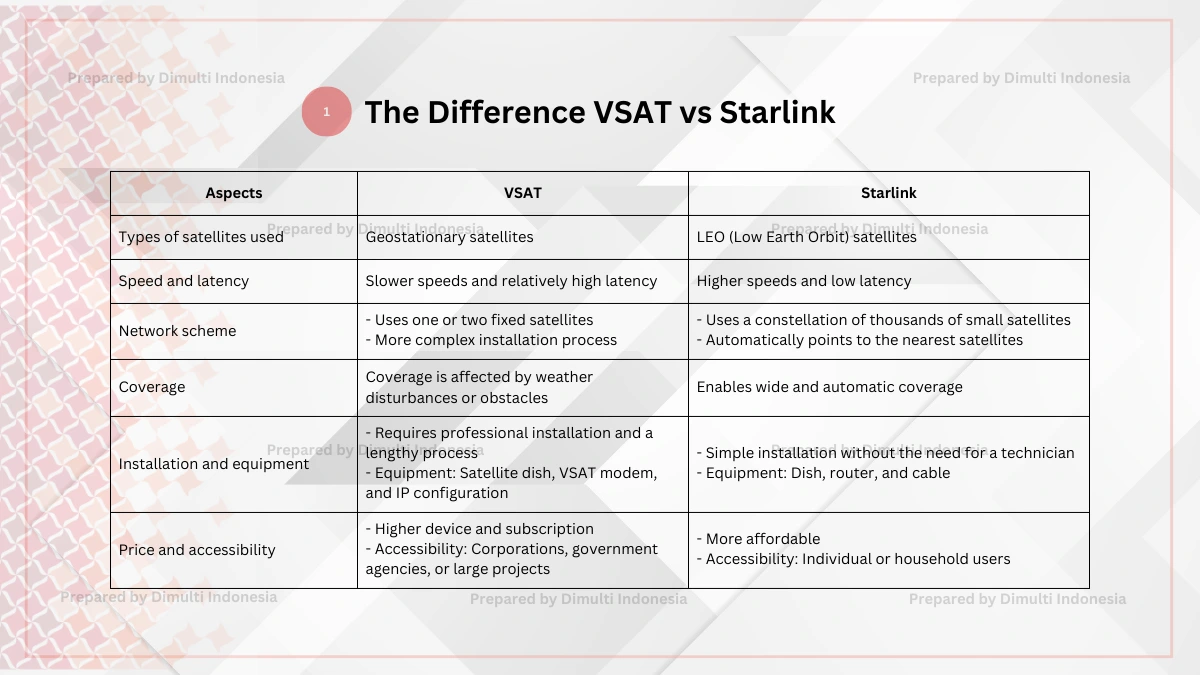Very Small Aperture Terminal (VSAT) and Starlink are the keys to provide internet access in remote areas. Although both improve the connection in the area that can not be reached by fiber optic, VSAT vs Starlink have some significant differences.
The differences between VSAT vs Starlink include the types of satellites used, speed, latency, network scheme, coverage, installation, equipment, price, and accessibility.
This article will explore the key differences between VSAT vs Starlink to enhance areas that can not be reached by fiber optic.
What is a VSAT?

A Very Small Aperture Terminal (VSAT) is a communication system that utilizes a small satellite dish to establish a connection with satellites. This device has a small antenna measuring only about 1 to 3 meters.
However, don't let its size fool you—this compact device can transmit signals to hard-to-reach areas. It is used in remote villages to access the internet. To function, VSAT does not require tall towers or long cables; it only needs an open sky.
What is a Starlink?

Starlink is a satellite-based internet service that aims to bring high-speed internet to the entire world, even to areas that were previously almost impossible to reach.
The device, developed by SpaceX, Elon Musk's space company, works through hundreds or even thousands of small satellites. These satellites orbit low above the Earth's surface, known as LEO (Low Earth Orbit).
LEO satellites are only about 500 km from Earth, much closer than conventional satellites in geostationary orbit (about 35,000 km). This proximity enables Starlink to offer faster connections, lower latency, and broader coverage.
The Differences Between VSAT vs Starlink

A VSAT and a Starlink are both key to providing internet access in remote areas. Here are six differences between VSAT vs Starlink:
1. Types of satellites used
VSAT: Uses geostationary satellites (GEO) that are in very high orbit, about 35,000 km above the Earth's surface.
Starlink: Uses LEO satellites that orbit only 500-2,000 km from Earth.
2. Speed and latency
VSAT: Has slower speeds and relatively high latency.
Starlink: Has higher speeds and low latency.
3. Network scheme
VSAT: Uses one or two fixed satellites, with a more complex installation process. Requires precise aiming of the antenna at the satellite's position in the sky.
Starlink: Uses a constellation of thousands of small satellites that are constantly moving and interconnected. Automatically points to the nearest satellite.
4. Coverage
VSAT: Coverage is affected by weather disturbances or obstacles that can interfere with the connection.
Starlink: Enables wide and automatic coverage, without the need for complicated configuration.
5. Installation and equipment
VSAT: Requires professional installation and a lengthy process. Installation requires a satellite dish, VSAT modem, IP configuration, and coordination with the service provider.
Starlink: Simple installation without the need for a technician. You just order the equipment (dish, router, and cable), install it yourself, connect it to the power supply, and connect to the app.
6. Price and accessibility
VSAT: Has higher device and subscription costs, so it is mostly used by corporations, government agencies, or large projects.
Starlink: Tends to be more affordable for individual or household users. Devices can be purchased directly and have flat-rate monthly subscription packages.
That’s the difference between VSAT vs Starlink that you can consider when choosing according to your personal needs.
If you are looking to run large operations, such as mining in the middle of the forest or construction projects with fixed bandwidth requirements and clear SLAs, a VSAT is a good choice. However, if you are looking for fast internet that is easy to install and can be accessed at home or in small businesses in remote areas, you can choose Starlink.